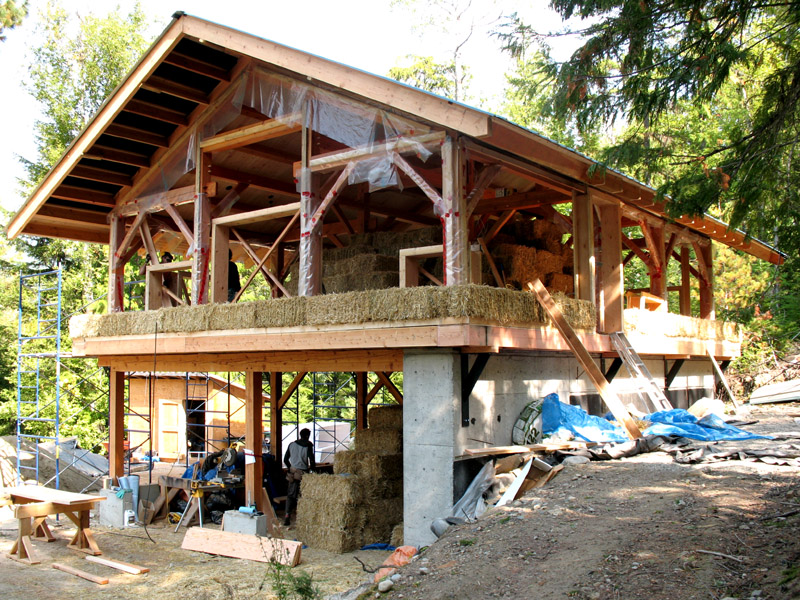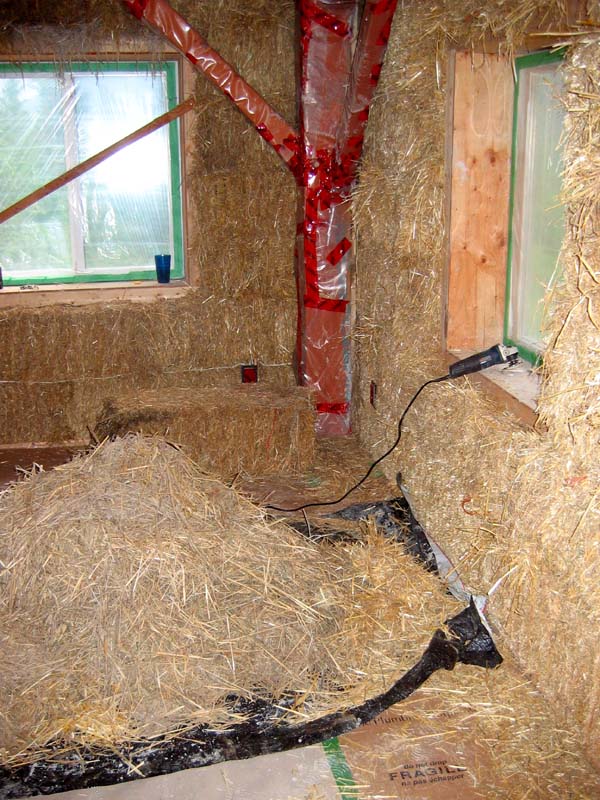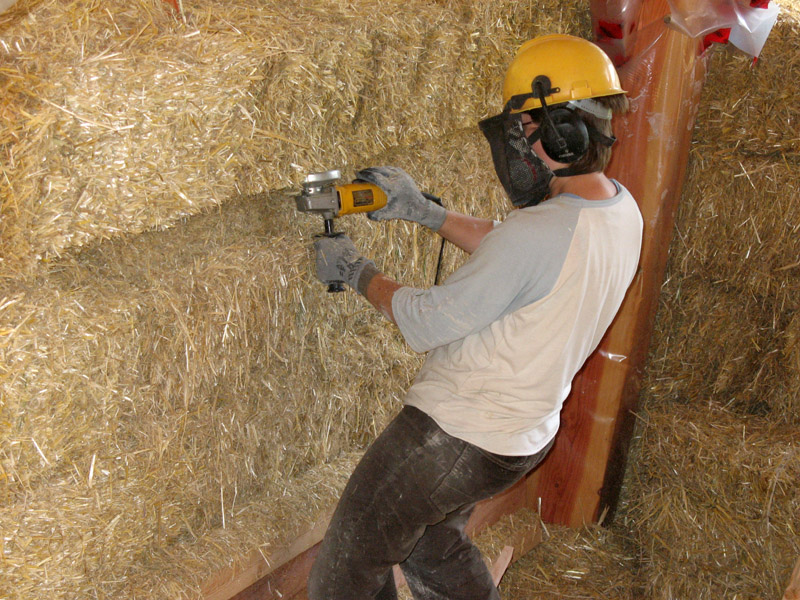The bales are stacked starting with the entire first course (row), going all the way around the perimeter of the building. This is the beginning of the exciting part, as all the preparations begin to pay off and you see results a lot more quickly.
The bales are placed tightly together, and custom sized bales are tied for the areas next to window or door bucks where the dimensions do not exactly fit the length of a bale. Ensuring that all the people who are stacking bales are maintaining a uniform standard of placement also makes it much easier to shape and finish the walls later on for the plaster stage.
Consider where you store your straw bales as you get ready for baling. The closer they are to hand for each wall, the less labour that is used to get them to the wall – especially considering hills or stairs. Bales can get heavy if you are lugging them around all day, and if you have a work party of friends and family or a workshop of participants to help with your labour efforts, you will want to conserve their energy to ensure they last for the whole baling process, rather than burning out from hauling bales from a distant storage shed.



